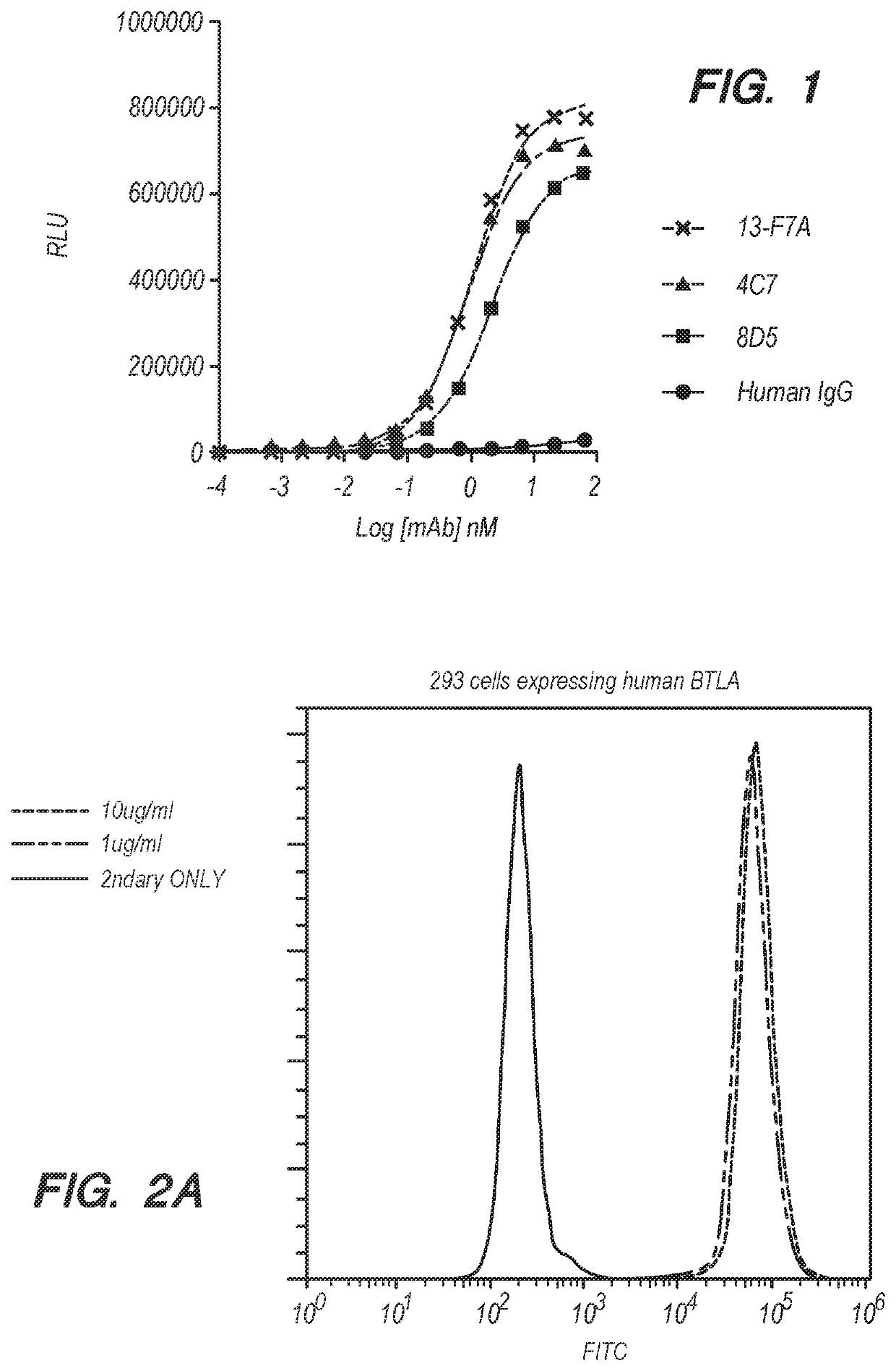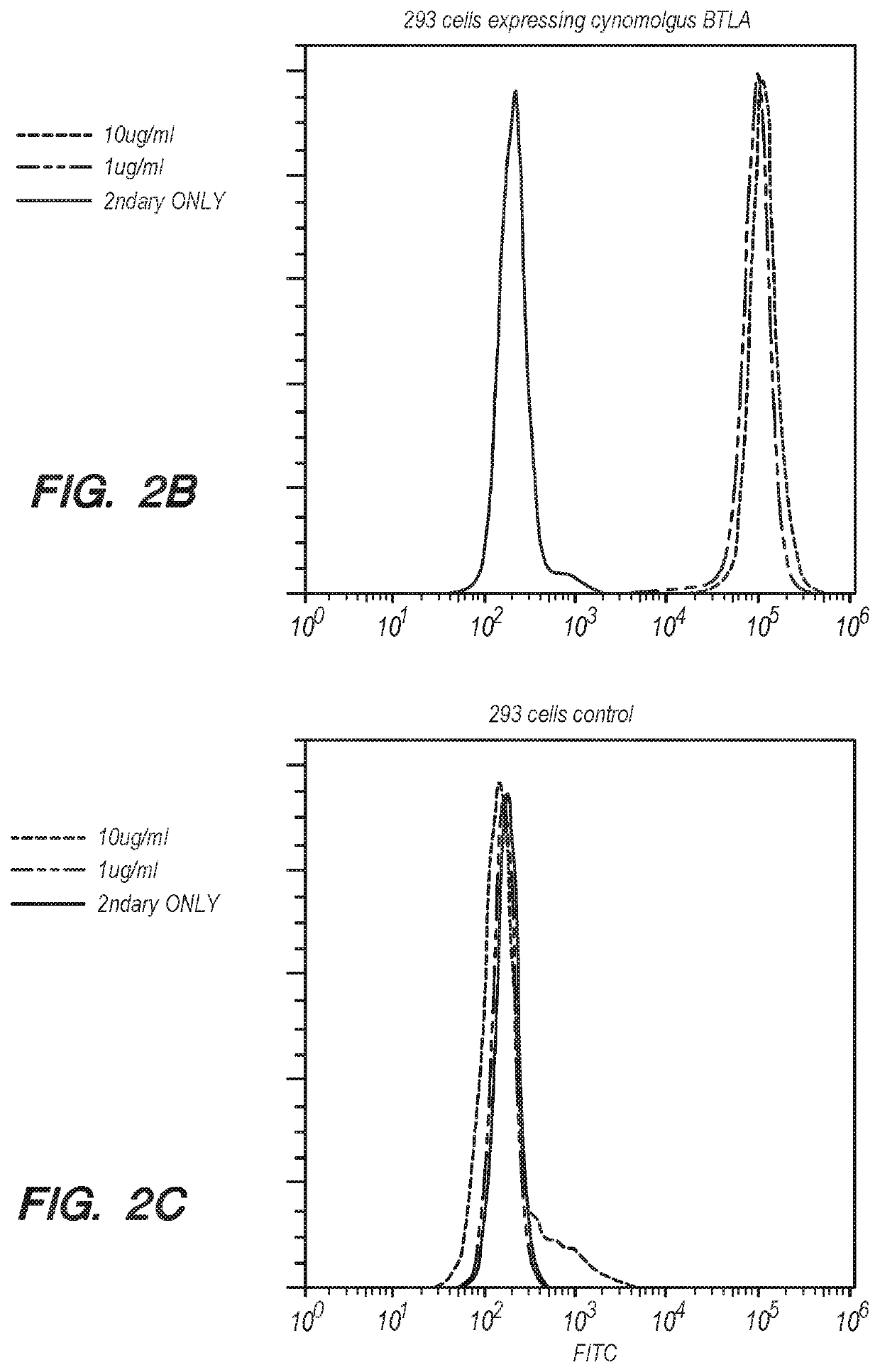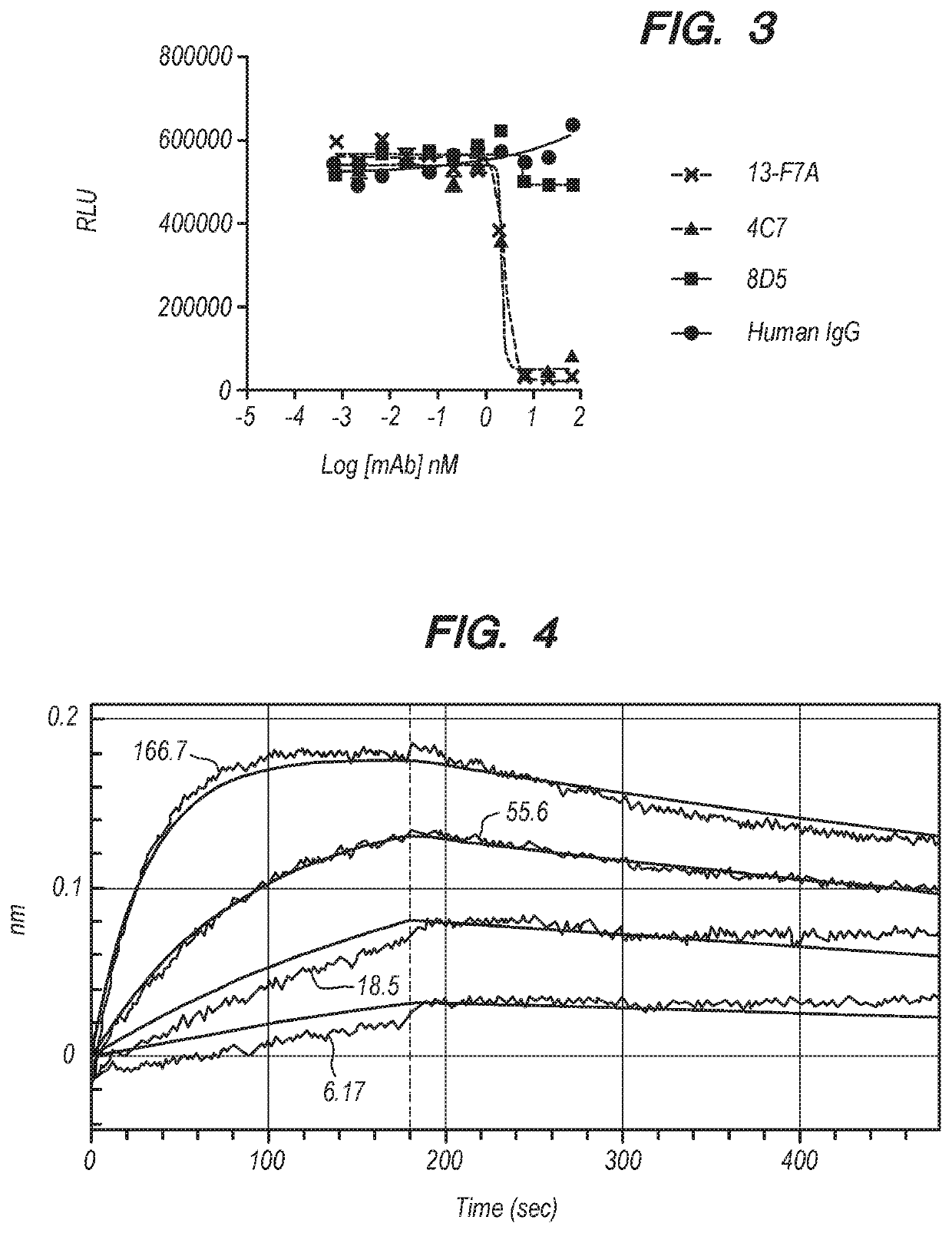BTLA-binding antibodies for modulating immune response and treating disease
a technology of btla and antibody, applied in the field of antibtla antibodies, can solve the problems of exaggerated immune response, dysregulation of inflammation and autoimmune diseases, and antibody blockade of immune checkpoint pair only effective in 20% of cancer patients
- Summary
- Abstract
- Description
- Claims
- Application Information
AI Technical Summary
Benefits of technology
Problems solved by technology
Method used
Image
Examples
example 1
Antibodies Bind to Recombinant BTLA
[0198]Binding of anti-BTLA antibodies to human or cynomolgus BTLA was assayed by ELISA. Plates (384-well) were coated with 20 μl BTLA(ECD)-HIS (1 μg / ml) overnight at 4° C. The wells were then washed with PBS and then blocked with 55 μl blocking buffer for 1h at room temperature. The wells were then washed with PBS and anti-BTLA antibodies from the current invention as well as anti-BTLA antibodies 4C7 and 8D5 (described in U.S. Pat. No. 8,563,694), and human IgG control were added into the wells at various concentrations (67, 22, 7.4, 2.5, 0.8, 0.3, 0.09, 0.03, 0.01, 0.004, 0.001 nM) and incubated for 1h at room temperature. The wells were then washed with PBS, and 20 μl of the diluted HRP-conjugated secondary anti-human IgG antibody was then added to the wells and incubated at room temperature for 45 minutes. After removing excess HRP-conjugated secondary antibody, a substrate solution was added to the wells to develop a chemiluminescence signal. P...
example 2
Antibodies Bind to BTLA Expressed on Cells
[0200]HEK 293 cells expressing human or cynomolgus BTLA were used to assess the binding of anti-BTLA antibodies to BTLA. Various concentrations of an anti-BTLA antibody (67, 22, 7.4, 2.5, 0.8, 0.3, 0.09, 0.03, 0.01, 0.004, and 0.001 nM) were incubated with the cells for 1 hour at room temperature. A fluorophore-conjugated anti-human IgG secondary antibody was then added, and the cells were analyzed by flow cytometry. FIGS. 2A-2B show exemplary binding profile of anti-BTLA antibody 13-F7A to HEK 293 cells that express human or cynomolgus BTLA. Compared with control HEK 293 cells (FIG. 2C), 13-F7A bind to both human BTLA and cynomolgus BTLA. Table 5 summarizes the binding EC50 of various anti-BTLA antibodies to human and cynomolgus BTLA measured by FACS.
[0201]
TABLE 5Human BTLA (MFI)Cyno BTLA (MFI)ClonesEC50 (nM)EC50 (nM)16-I20A5.06.915-C19A5.54.416-H16A4.74.412-I8A2.95.08-M23A3.44.513-F7A1.52.64C72.34.4comparator
example 3
Antibodies Inhibit BTLA / HVEM Interaction
[0202]An ELISA-based biofunction assay was used to assay the effect of anti-BTLA antibodies on BTLA / HVEM interaction. Each well of a 384-well ELISA plate was coated with 20 μl of 5 μg / ml human HVEM-ratIgG2a at 37° C. for 1 hr (or overnight at 4° C.). After coating, the plate was washed twice with Molecular Devices Aquamax 2000 plate washer with wash solution (PBS containing 0.05% Tween-20), and then blocked for 1 hr at room temperature (RT) with blocking solution (PBS containing 3% BSA). During the blocking step, 1 μg / ml human BTLA-human Fc or 0.5 μg / ml cynoBTLA-human Fc was mixed with anti-BTLA antibodies, 4C7, 8D5 or human IgG2 control at various concentrations (67, 22, 7.4, 2.5, 0.8, 0.3, 0.09, 0.03, 0.01, 0.004, 0.001 nM). After completion of the blocking step, the plate was washed twice with the plate washer. 20 μl protein / antibody mixture was then added to the plate and incubated for 1 hr at RT. Unbound material was discarded and the pla...
PUM
| Property | Measurement | Unit |
|---|---|---|
| dissociation constant KD | aaaaa | aaaaa |
| temperature | aaaaa | aaaaa |
| size | aaaaa | aaaaa |
Abstract
Description
Claims
Application Information
 Login to View More
Login to View More - R&D
- Intellectual Property
- Life Sciences
- Materials
- Tech Scout
- Unparalleled Data Quality
- Higher Quality Content
- 60% Fewer Hallucinations
Browse by: Latest US Patents, China's latest patents, Technical Efficacy Thesaurus, Application Domain, Technology Topic, Popular Technical Reports.
© 2025 PatSnap. All rights reserved.Legal|Privacy policy|Modern Slavery Act Transparency Statement|Sitemap|About US| Contact US: help@patsnap.com



